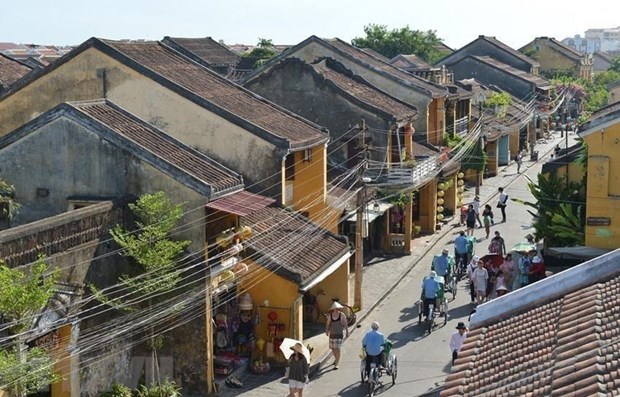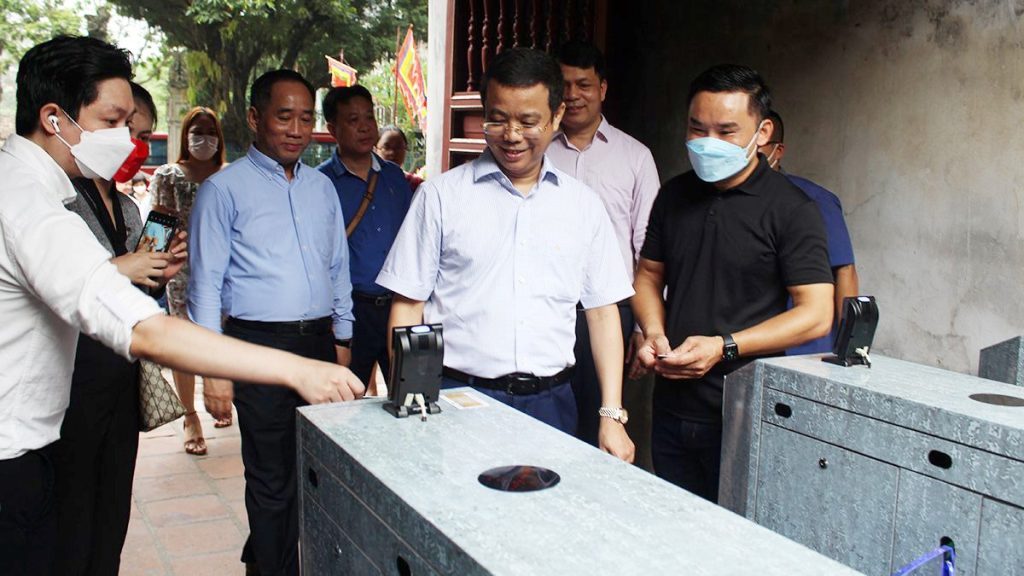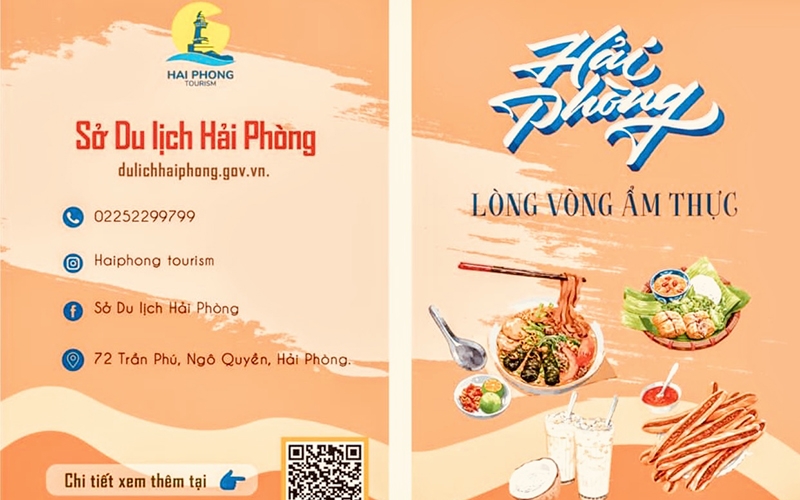(TITC) – Many cities in ASEAN received ASEAN Clean Tourist City Awards for their cleanliness, green environment and smart facilities. The award intends not only to strengthen attractiveness and increase the ASEAN tourist cities’ competitiveness, but also to strengthen the quality of tourism products and services in the region in accordance with the ASEAN Tourism Strategic Plan 2016-2025.
The selection of the winning cities is based on a set of indicators that evaluate how sustainable the nominated ASEAN cities are, assess the quality of the tourism they offer, and identify areas that can be improved.
The indicators including: Environmental Management; Cleanliness, Waste Management, Awareness-building about Environmental Protection and Cleanliness, Green Spaces, Health Safety and Urban Safety and Security; Tourism Infrastructure and Facilities.
In which the environmental management refers to a bundle of methodologies taking a consideration of the impact on environment which can be derived from the development activities of the country, cities or is to arrange for any development project.
The evaluation of the impact on the environment of each activity has been made at different levels and in diverse ways. At the same time, a wide variety of activities we can implement to respond to the issues are as follows: Awareness raising, restriction or other prohibitions and urban development plan, etc.
This indicator is an undeniably important element that we have seen in almost all policies relating to the improvement and enhancement of living standards of the general public. It is certain that we can notice that the basic indicator gathered all of the components—indicating the measurement of current situation of surrounding environment at the living atmosphere by focusing on the main parts of public health’s component such as: air quality, generally using water quality, pure drinking water quality, etc. Thus, the ACTCS is aimed at promoting and encouraging the cities to announce and stun the people within the boundaries of their competence as well as the visitors to their cities in order to be aware of environmental situation whereby they are living and visiting.
Furthermore, certain detailed indicators of this indicator have the objective of encouraging all the candidacy cities to start undertaking the preventive measure against any activity which has an adverse effect on the living standards and pushing for the implementation of their urban development plan to be sure about the positive and negative impacts which might be caused by the cities’ development activities. The indicator also wishes to raise awareness of
the cities about the use of renewable energy.
The public gathering place is a place where many people can make mutual interrelationship. The cleanliness along the public is reliant on individual behaviour and the attention to take care of that place. Besides, the cleanliness along the public gathering places is an important factor affecting the common welfare of all people. In fact, the cleanliness along the public gathering places significantly contributes to improve their living standards and the urban beauty, which is an unavoidable requirement for tourists.
In this indicator, the cleanliness along the public gathering places such as the public buildings, information centres, green areas, commercial centres, resorts and parks, the main roads, and the public toilets, etc.
It will focus on the reality of common views along the public gathering places of the cities and measures the limitation of the attention to the municipal authority’s cleanliness. In general, the urban visitors as well as the general public are attracted with the appearances of their visiting places. And this is also the condition to enhance each urban prestige.
Waste management is referred to waste collection and storage. Waste is a consequence of the people’s activities fulfilling their daily needs. Waste management in this context has the main objective of contributing to the reduction of negative impact on people’s health, on the environment and on the overall urban aesthetics.
It is a fact that since the mid 20th century, the quantity of the waste around the world has increased remarkably (in conjunction with industrial development growth). The negative impact of industrial waste is a global. Even though the waste management and treatment systems at both global and national levels have faced various challenges of implementation, a simple and easily applied system must be implemented by the cities.
The Standard requires cities to implement an efficient waste management plan including solid and liquid waste collection and treatment as well as awareness campaigns relating to this issue.
Awareness-building about environmental protection and cleanliness refers to activities that are comprised of three main components: awareness raising objectives, goals to be implemented, and support documents that are used to provide information. The awareness-building about environmental protection and cleanliness refers to sensitising local people, tourists and relevant stakeholders about the benefits of cleanliness, hygiene, sanitation, and healthy environment.
The awareness raising can be considered as a form of knowledge or general knowledge transformation/provision (In general, it is a consequence from repeated activities). That’s why, the objectives of awareness-building is to spread information about the damages which are the challenges of daily wrong implementation and to disseminate/explain the right attitude and implementation—possibly contributing to improve the living standards. The Clean Tourist City
Standard has a special interest to the reminder of the attention of local people, tourism service providers, and tourists about environment and cleanliness.
The awareness raising is a main mechanism for encouraging the implementation of the Clean Tourist City Standard. The mechanism is considered as key activity which should be initiated by the cities to remind relevant stakeholders to understand and start contributing to gradually implement the standard. It can be made in different forms. We do not require any special activity by providing the possibility for cities deciding to choose the methods deserving their situation. Aside from, the assessment should be focused on the efficiency, regularity of activities which are set forth. The awareness raising can be implemented in collaboration with other relevant stakeholders such as international organisations/NGOs, etc.
Green spaces in cities are areas accessible to the general public (the local population as well as tourists) where they can relax. They should be decorated with trees, flowers, and/or grass. Roundabouts are not considered green areas because their purpose is to filter traffic and not used as areas for the population to relax. Green spaces should also be distinguished from “Natural Tourist Sites”, even though natural tourist sites can be linked and surrounded by green space. Furthermore, the cities cannot charge visitors in the green areas a fee to enjoy the area as in the case at some tourist sites.
Green spaces improve living conditions by providing natural locations in the urban areas. In general, some green spaces have already been arranged along the cities. Therefore, the standard is aimed at encouraging the use of green spaces by focusing on their quantity and maintenance.
The standard expectedly desires the cities to implement the green space maintenance and management in a way which is simple, easy and appropriately successful.
In Health Safety and Urban Safety and Security idicator, “Safety” is a crucial component of a tourism policy. The safety can be a classified into non-risk or low risk situations. “Safety” must be considered as a basic human right.Safety and security is the responsibility of the local authority of the area and ensuring of safety of tourists as well as of people living in the region is the main objective of this indicator. The indicator is aimed at desiring a view of harmonization between international tourists and local people, and at encouraging the cities to take actions to contribute to the reduction of risk which is occurred in all forms and in the sense of contributing to the tourism development in the context of safe tourism.
The indicator assesses the number and quality of health centres, pharmacies and health service providers, that are available in the city as well as evaluating the risk management strategy in place, the extent of sanitation inspection, public order management, the safety of travelling around the city, and the dissemination of information provided to tourists and the local population about the crime prevention and the enforcement of the rules.
The tourism infrastructure and facilities are the principle components of tourism development policies. Tourism development relies on the infrastructure, connectivity, and the abundance of facilities. It is certain that the abundance of infrastructures and facilities would facilitate the travel and transport that are crucially important for tourism. If something to be mentioned below is lack or interruptive by any reason, it will result in obstruction of the urban development as well as the growth of urban tourism. The most important thing is that cities shall have a proper planning for tourism by indicating plans and strategies to control the rhythm of tourism development in the city. Supporting infrastructures are mainly information centres, signage to tourist sites and tourist maps that are crucial for tourism information provision in the city. Other places where tourists as well as local residents can enjoy, together with equipment for serving the different objectives such as relaxation, culture, study, shopping, sports…etc., shall be recommended in the city.
Tourist satisfaction is included in this indicator as cities must be aware of what needs to be improved in order to attract tourists and encourage them to stay longer in the city.
Based on assessment these sevent indicators, ASEAN cities will be chosed to imprint ASEAN Clean Tourist City Label with 3 year validity.
Tourism Information Technology Center




